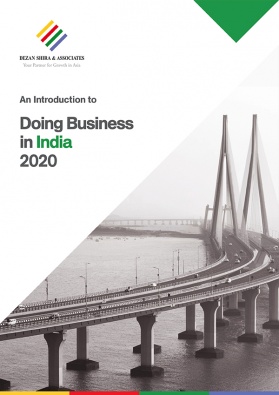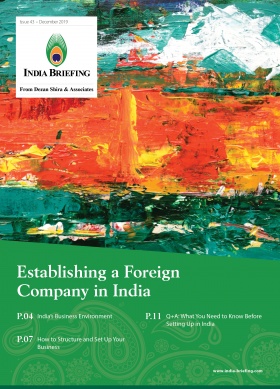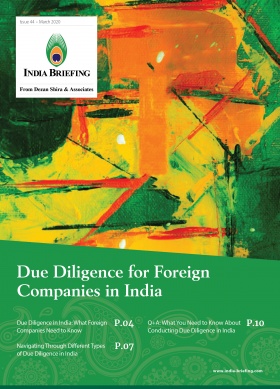India’s Healthcare Investment Outlook: A Brief Profile
India is among the most populous countries in the world with an outsized private healthcare sector. The gross under investment by the government in the healthcare industry has resulted in a rural-urban divide as well as mushrooming opportunities for private players. This is evident in the share of GDP invested in public healthcare – which grew to an estimated 1.6 percent in FY2020 from 1.3 percent in FY2016. India’s healthcare spending is thus mostly out-of-pocket expenditure.
Healthcare is India’s largest sector – both in terms of employment and revenue. The country’s healthcare industry is highly diversified and includes hospitals, medical devices, medical equipment, clinical trials, outsourcing of back office healthcare services, telemedicine, medical tourism, and health insurance.
In this article, we briefly profile the hospital, medical tourism, diagnostics, and health insurance industries in the country.
Market overview
Key factors driving growth in the healthcare industry in India include expanding healthcare coverage under government schemes and private insurance, improving services, and increasing expenditure by public and private stakeholders.
New developments in the healthcare market cater to the following trends – rise in lifestyle diseases, ageing population, demand for affordable healthcare services, health monitoring through diet, nutrition, and wellness testing as well as technology penetration and government incentives. Rising income levels and growing awareness also contribute to market growth.
India’s healthcare delivery system is divided into two broad categories based on government participation –
- the public healthcare system, which covers limited secondary and tertiary care institutions in key cities and basic healthcare facilities in the form of sub-centers (SCs), primary healthcare centers (PHCs), and community health centers (CHCs) – of this, healthcare delivery in rural areas is predominantly covered by PHCs; and
- the private sector, which covers a majority of the secondary, tertiary, and quaternary medical care institutions, concentrated in metropolitan cities and tier 1 and tier 2.
Investment outlook
100 percent FDI is allowed under the automatic route for greenfield projects in the healthcare industry. For investments in brownfield projects, up to 100 percent FDI is also permitted, but under the government approval route.
Below we spotlight some key segments in the healthcare delivery services sector in India for the benefit of foreign investors.
Hospital industry
The hospital industry accounts for 80 percent of the total healthcare market in India, and in the last five years has seen huge investor demand – from both global as well as domestic investors. By FY2022, India’s hospital industry is expected to reach US$132.84 billion from US$61.8 billion in FY2017, growing at a compound annual growth rate (CAGR) of 16 to 17 percent. The Indian medical tourism market, meanwhile, is growing at 18 percent y-o-y to reach US$9 billion by 2020. The government also plans to increase budget allocation for public health spending to 2.5 percent of the country’s GDP by 2025.
Given its large population and relatively lower costs, the hospital industry in India has attracted massive investments – to fund healthcare delivery, advance technology and medical care, and expand market reach. This is further facilitated by the poor coverage of credible public healthcare institutions and services.
As per data released by the DIPP (now renamed DPIIT), foreign direct investment to the healthcare delivery services sector between April 2000 and March 2020 amounted to more than US$6.7 billion (hospitals and diagnostic centers). In 2018 alone, 23 partnership deals worth US$679 million were reached in the healthcare industry. Mergers and acquisition deals in the hospital industry jumped 155 percent to INR 76.15 billion (US$1.09 billion) in the fiscal year ending March 2019, according to data sourced from India Brand Equity Foundation (IBEF).
Key drivers of investment growth include growing interest from private equity (PE) investors, increasing private capital from existing global and local hospital chains, business conglomerates, entrepreneurs, and international strategic players.
As of April 2019, there were 38 Joint Commission International (JCI) accredited hospitals in India. As of July 18, 2020, there are 708 National Accreditation Board for Hospitals and Healthcare Providers (NABH) accredited hospitals in India.
Leading multispecialty corporate hospital chains in India include Apollo Hospitals, Fortis Healthcare, Narayana Health, Manipal Hospitals, Parkway Pantai – Gleneagles Global Hospitals, Max Group, and Sahyadri Hospitals.
Medical tourism and impact of COVID-19
According to a joint NATHEALTH-PwC industry report from 2018, the cost of medical treatment in India was less than 1/10th that in the US. The report further stated that clinical outcomes in India’s top hospitals were comparable to those at internationally recognized facilities. This is reflected in the feedback from those applying for medical visas to India – the top reason for medical travel to India was treatment at accredited facilities and by skilled doctors at low costs.
In 2015, India ranked the third most popular medical tourism destination in the world, with the industry valued at US$3 billion. The number of foreign tourists coming into the country on medical visas was nearly 234,000 that year – the top sending countries from the Middle East, central Asia, and Africa. By 2017, the number of such tourists had increased to about 450,000.
India has expanded its e-tourist visa regime to include medical travel. Medical attendant visas are also issued to ease the travel process for medical tourists and the extent of duration could be up to six months.
Cut to 2020 when India’s medical tourism industry was set to reach US$9 billion in valuation – and the situation has dramatically changed. This, however, is not due to structural factors but the ongoing COVID-19 pandemic. Normalization is expected – but by when is the more crucial question; industry watchers say not till the beginning of 2021.
Nevertheless, key stakeholders are appealing to the Indian government. Medical value travel (MVT) companies (in consultation with hospitals) that promote medical tourism in Gurugram (formerly Gurgaon), a medical tourism hub adjacent to Delhi and part of the National Capital Region (NCR), have submitted (jointly with the Federation of Indian Chambers of Commerce and Industry) – a set of comprehensive standard operating procedures (SOPs) to the central government ministries of commerce, civil aviation, health and family welfare.
The SOPs detail the instructions that need to be followed by international patients who come to India for surgeries and cancer treatment as well as the hospitals responsible for their treatment. As per industry analysts, the medical tourism segment generated approximately INR 4 billion (US$53.36 million) per month in the Delhi-NCR.
The SOPs propose the following to enable restart of medical travel:
- Hospitals would need to carefully choose patients and avoid selecting persons with serious co-morbidity issues.
- Patients and their attendants will need to take the RT-PCR tests 48 hours before their scheduled flight – only those showing a negative RT-PCR test result will be allowed to enter India.
- On arrival, the patient will be examined for respiratory and influenza-type infections, they will be subject to RT-PCR and COVID-19 antibody tests, and quarantined. If they are found symptomatic – they will be transferred directly to the isolation ward of the hospital they were to be admitted to for treatment/surgery.
- Asymptomatic patients will be shifted to isolation units established by the hospitals in nearby hotels/guest houses.
- The final planned treatment of the patient can start after completing 14 days from the date of arrival; a final antibody test would be conducted upon discharge.
If these SOPs are approved – testing and isolation facilities will add to the overall costs of treatment but will likely remain competitive when compared to western or developed countries. Meanwhile, any part of India opening to international medical travelers would need to have its own COVID-19 outbreak under control.
One instance that shows the industry is opening again is the restart of international air travel through bilateral air bubble agreements. It has been reported in Maldivian media, for example, that a total of 40 Maldivians traveled to India this week, including 18 patients and caregivers as well as four medical attendants. India and Maldives announced their air bubble agreement on August 13.
Update: Medical visas restored
On October 22, 2020, India’s union home ministry announced in a statement that medical visas will be restored for foreign nationals seeking medical treatment in India, including the provision of a visa for one person chosen as the applicant’s attendant once their medical visa is approved.
State of the diagnostics industry
The US$9 billion diagnostics industry in India presents sizeable growth opportunities – in its current state, it is highly fragmented with organized labs holding 35 percent share of the market and standalone centers occupying 45 to 50 percent. The remaining are attributed to hospital-based diagnostic centers.
In the next few years, however, analysts expect the diagnostics industry will get consolidated as major diagnostics chains work on building their hub and spoke structures – acquiring smaller, independent players or enabling private pathology labs and radiology centers to become franchisees of the larger players. For example, the acquisition of four laboratories in Surat, Gujarat for a combined consideration of INR 180 million (US$2.39 million), by Carlyle backed Metropolis Healthcare Ltd.
A concern in this area is the lack of regulation, which leads to pricing pressures, lack of standardization in treatment protocols due to the proliferation of under-qualified technicians and service providers. The government appears to be working to redress this through amendments proposed to the Clinical Establishment (Central Government) Rules, 2019. If these amendments setting minimum standards are not complied to, health facilities will not be granted registration. The minimum standards cover infrastructure, manpower, equipment, drugs, support service, and records. Another regulatory grievance relates to the accreditation of pathology labs – as per industry watchers, barely one percent are accredited by the National Accreditation Board for Testing and Calibration Laboratories (NABL, under the Quality Council of India).
Health insurance ecosystem
India’s health insurance ecosystem consists of multiple stakeholders – insurance companies, beneficiaries, provider hospitals, third-party administrators, intermediaries, reinsurers, InsurTech (internet-first insurance platforms), startups, diagnostics, pharmacies, value-added service providers, government regulators, and government-funded social insurance schemes.
According to IBEF, the gross direct premium income underwritten by health insurance grew 17.16 percent year-on-year (y-o-y) to reach INR 516.37 billion (approx. US$6.87 billion) in FY20. This accounted for 27 percent of the total general insurance (non-life) premium collected in India that year, which stood at INR 1,893 billion. In India’s insurance sector, health insurance is second only to the automobile insurance segment in terms of premium contributions. Yet, barely 10 percent of India’s total population is covered by private health insurance.
In September 2018, the National Health Protection Scheme was launched under Ayushman Bharat to provide coverage of up to INR 500,000 (US$7,723) to more than 100 million vulnerable families. The scheme should increase the penetration of health insurance in the country from 34 percent to 50 percent.
As per Union Budget 2019-20, 100 percent foreign direct investment (FDI) is permitted for insurance intermediaries. The market share of private sector companies in India’s non-life insurance market is at 56 percent as of April 2020.
The surge in claims arising due to the COVID-19 pandemic across the country has resulted in a number of insurers entering into strategic partnerships with established companies to offer COVID-19 insurance plans. New policies floated cover cost of PPE kits and other expenses incurred during COVID-19 treatment and have attracted significant interest given the widespread nature of the outbreak in India. In June, the industry regulator, Insurance Regulatory and Development Authority of India (IRDAI), published its guidelines for COVID-19 standard benefit-based and COVID-19 standard indemnity health policies. Health and general insurance providers have been mandated to offer the indemnity policy.
Final takeaways
In the post-COVID-19 era, major growth drivers for investments in the Indian healthcare industry will include telemedicine opportunities, diagnostics, and alternative medicine systems like Ayurveda. Medical tourism will likely take longer to revive – areas where the outbreak is under control will benefit from a faster restart than those struggling to manage new case loads. India is keen not to exacerbate its local cases with imported infections – given the lopsided state of its healthcare infrastructure.
The rapid increase in lifestyle diseases in India has contributed to a greater interest in preventative care and early medical intervention, which has in turn facilitated the growth of multispecialty hospitals and alternative medicine facilities in the country. In the diagnostics industry, the trend in India is moving towards wellness testing rather than sickness testing – particularly in urban centers.
About Us
India Briefing is produced by Dezan Shira & Associates. The firm assists foreign investors throughout Asia from offices across the world, including in Delhi and Mumbai. Readers may write to india@dezshira.com for business support in India.
- Previous Article Tax Ruling Says Dividend Tax in India to be Based on Beneficial Treaty Rate
- Next Article Tax Audit Report for AY 2020-21 in India: Some Considerations








